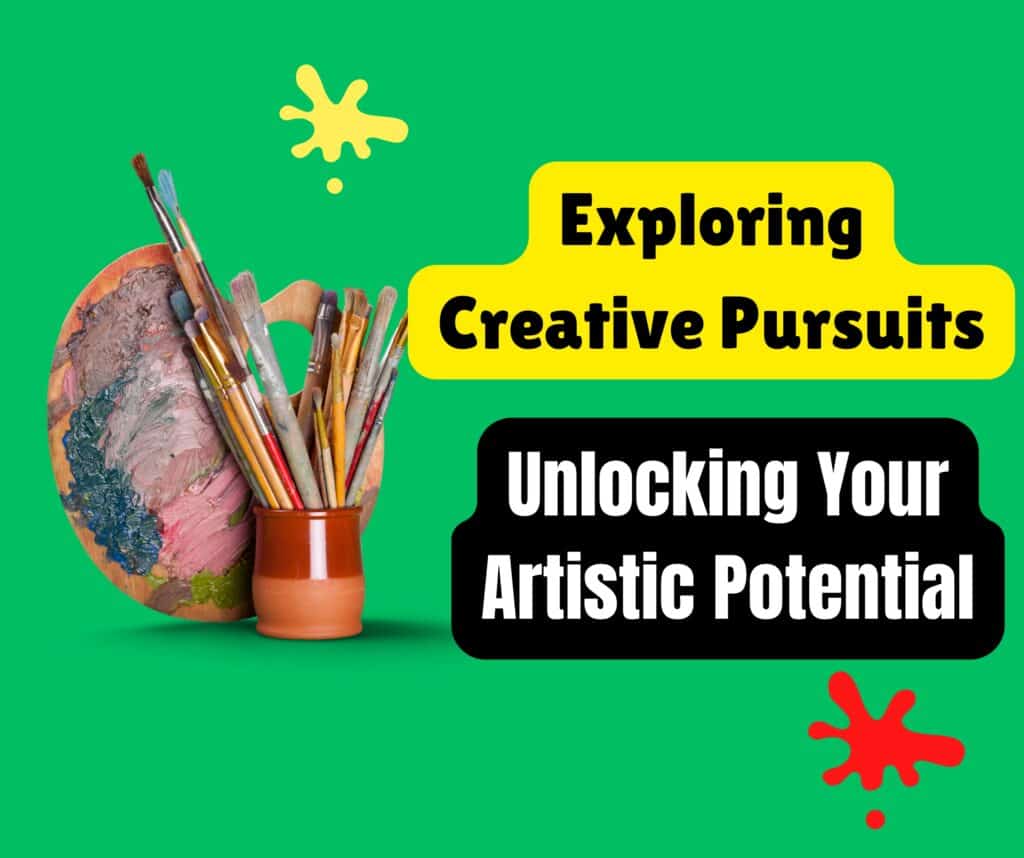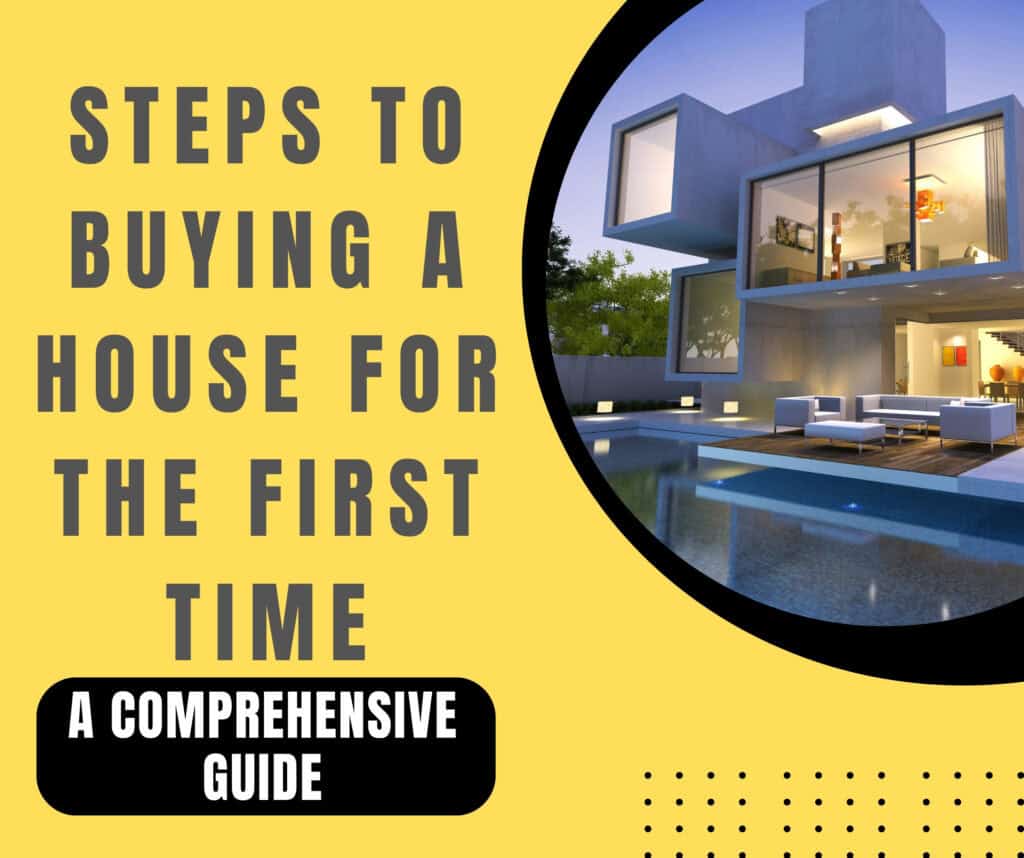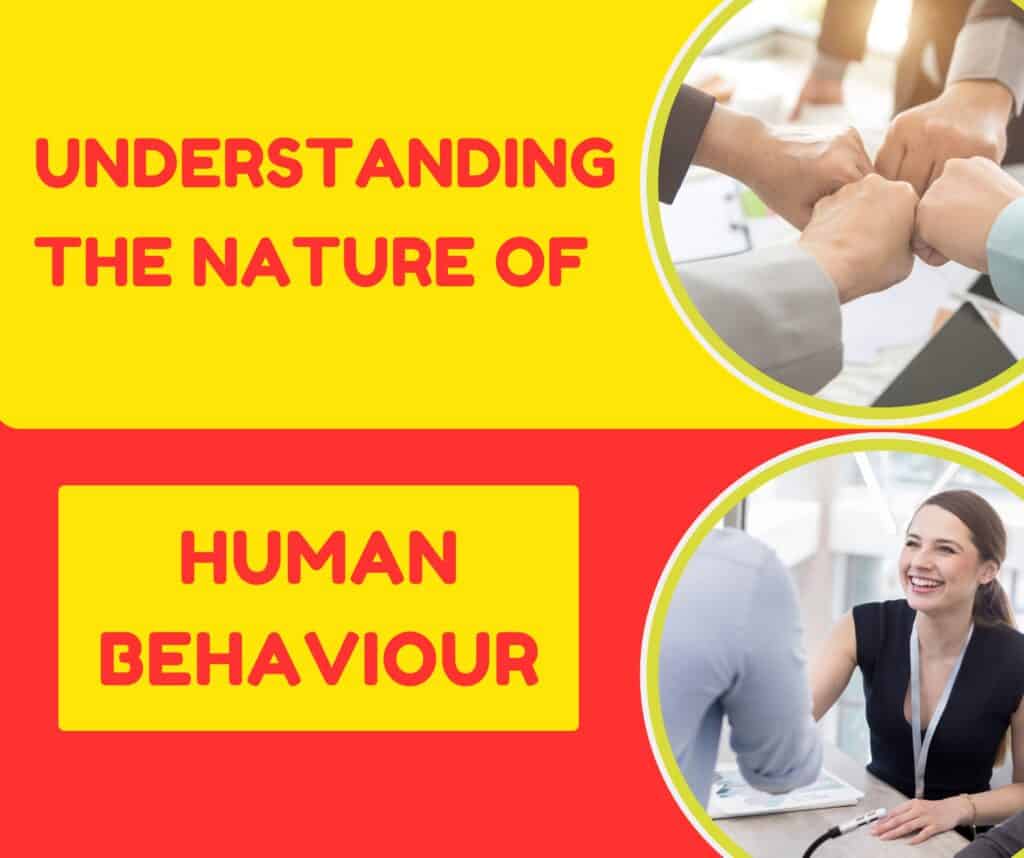Creative pursuits are more than just hobbies—they are powerful outlets for self-expression, personal growth, and mental well-being. Whether it’s painting, writing, crafting, or playing music, engaging in creative activities allows us to explore our passions, reduce stress, and develop valuable skills. In a world that often prioritizes productivity and efficiency, taking time for creativity can help balance the demands of daily life while unlocking new levels of innovation and problem-solving. In this article, we’ll explore the benefits of creative pursuits, different types of artistic endeavors, and how you can get started on your own creative journey.
The path to financial freedom begins here. Click now to start your business!
Try Wealthy Affiliate (For Free).
What Are Creative Pursuits?
Creative pursuits are activities that allow individuals to express themselves artistically, explore their imagination, and create something unique. These pursuits encompass a wide range of artistic endeavors, including visual arts (like painting and drawing), performing arts (such as music and dance), literary arts (like writing and poetry), and even hands-on crafts and DIY projects. The essence of creative pursuits lies in personal expression, innovation, and the process of making something new or beautiful.
While creativity is often associated with the arts, it can manifest in various aspects of life, including problem-solving, entrepreneurship, and even everyday tasks. Whether it’s writing a story, designing a piece of furniture, or choreographing a dance routine, engaging in creative pursuits allows individuals to tap into their inner potential and explore new ways of thinking.
The Significance of Creative Pursuits in Personal Development
Creative pursuits play a crucial role in personal development by nurturing various skills and traits that go beyond the artistic realm. Engaging in creative activities helps individuals:
- Cultivate Self-Awareness: Creative activities often require introspection, enabling individuals to explore their thoughts, emotions, and experiences. This self-awareness can lead to personal growth, as people better understand their strengths, weaknesses, and passions.
- Boost Confidence: Creating something from scratch, whether it’s a painting, a song, or a story, fosters a sense of accomplishment. This boost in confidence can translate into other areas of life, encouraging individuals to take on new challenges with a positive mindset.
- Develop Problem-Solving Skills: Creative pursuits often involve tackling challenges or finding new ways to express an idea. These experiences help enhance problem-solving skills by encouraging out-of-the-box thinking and innovative solutions.
- Foster Emotional Resilience: The process of creation involves experimentation and, at times, failure. Learning to embrace mistakes and continue creating despite setbacks helps individuals build resilience, which is crucial for personal and professional growth.
How Creative Activities Enhance Mental Well-being and Productivity
Engaging in creative pursuits has been shown to provide numerous benefits for mental health and overall productivity. Here’s a brief overview of how creative activities positively impact well-being and efficiency:
- Reducing Stress and Anxiety: Creative activities such as drawing, writing, or playing music have a calming effect on the mind. These pursuits provide a healthy outlet for emotions, helping to reduce stress and anxiety levels by focusing attention on something enjoyable and productive.
- Boosting Mood and Happiness: Creating something gives individuals a sense of accomplishment and fulfillment. The joy that comes from seeing a project completed or making progress can boost overall mood and lead to a greater sense of happiness and satisfaction in life.
- Enhancing Focus and Productivity: When you engage in a creative activity, it can help you enter a state of “flow,” a psychological state where you are completely immersed and focused on what you’re doing. This level of deep concentration not only makes the activity more enjoyable but also enhances overall productivity. Many people find that their creativity spills over into other areas of life, improving problem-solving and time management skills.
- Increasing Cognitive Function: Creativity is linked to cognitive benefits like improved memory, enhanced brain plasticity, and stronger connections between different brain regions. By engaging in creative activities, individuals stimulate their brain, which can lead to improved mental agility and better performance in both personal and professional tasks.
The Benefits of Engaging in Creative Pursuits
Engaging in creative pursuits offers a wide array of benefits that extend beyond simple enjoyment. Whether through visual arts, music, writing, or crafting, creativity serves as a powerful tool for enhancing mental well-being, cognitive development, and social connections. Let’s break down how these pursuits positively impact various areas of life.
Mental Health Advantages
- Reduces Stress and Anxiety
- Creative activities provide a therapeutic outlet: Engaging in activities like painting, writing, or playing an instrument allows individuals to focus on the present moment, providing a break from the stressors of daily life. The act of creation offers a mindful escape, giving the brain a chance to recharge and reduce anxiety.
- Improves emotional regulation: When we create, we often channel our emotions into the process. This helps release pent-up feelings, reducing the mental burden of stress. For instance, writing about personal experiences or drawing out emotions can provide clarity and relief, making it easier to manage anxiety.
- Creative flow reduces cortisol levels: Research shows that achieving a state of “flow”—a deep focus on a creative task—lowers cortisol, the body’s primary stress hormone. The deep immersion in an artistic task allows the brain to relax and disengage from the stresses of everyday life.
- Boosts Mood and Overall Happiness
- Sense of accomplishment: Completing a creative project, whether it’s finishing a painting or writing a poem, offers a sense of achievement. This feeling of accomplishment triggers the release of dopamine, a neurotransmitter associated with feelings of pleasure and reward, leading to an improved mood and overall happiness.
- Self-expression fosters joy: Creativity allows people to express their thoughts, feelings, and ideas in a way that words often can’t capture. This expression can foster a deep sense of joy, as individuals feel more connected to themselves and their emotions.
- Combats feelings of isolation: Engaging in creative activities can help ward off feelings of loneliness or isolation, particularly for those who work alone or face mental health challenges. Creativity connects individuals to something larger than themselves—whether it’s a project, an audience, or a community of like-minded individuals.
Cognitive Development
- Enhances Problem-Solving Skills
- Creativity involves overcoming challenges: Creative endeavors often require individuals to approach problems from different angles, forcing them to think outside the box. Whether it’s finding the right brushstroke for a painting or developing a storyline, creative problem-solving helps hone this essential life skill.
- Innovative thinking: Creative pursuits encourage individuals to explore new perspectives and experiment with unconventional solutions. This innovative thinking translates well into other areas of life, from personal decision-making to professional challenges.
- Trial and error leads to growth: Engaging in creativity often means experimenting, failing, and trying again. This iterative process enhances problem-solving skills by teaching resilience and adaptability in the face of challenges.
- Promotes Critical Thinking and Innovation
- Artistic projects require strategic thinking: Whether you’re composing music, designing a craft, or writing, creative work forces you to think critically about each decision you make. What colors work best together? How should the plot evolve? This form of strategic decision-making strengthens critical thinking skills.
- Creativity nurtures innovation: Many great innovations in science, technology, and business stem from creative thinking. Creative individuals are more likely to approach problems with fresh perspectives, question the status quo, and generate innovative solutions. This type of thinking can lead to breakthroughs not only in art but in any profession.
Social Benefits
- Fosters Community and Connection
- Shared creative experiences build bonds: Engaging in creative activities, whether attending an art class, participating in a music group, or joining a writing circle, brings people together. These shared experiences foster a sense of community and belonging, helping individuals build meaningful relationships.
- Creative expression bridges gaps: Art and creativity are universal languages that can transcend cultural, linguistic, and social barriers. Creative pursuits often bring together individuals from diverse backgrounds, creating opportunities for connection and understanding across different walks of life.
- Creativity encourages empathy: Engaging in creative endeavors helps individuals better understand their own emotions and the emotions of others. Whether through storytelling, visual arts, or performance, creative expression fosters empathy and emotional connection, strengthening social bonds.
- Encourages Collaboration and Teamwork
- Group projects enhance teamwork: Many creative activities, such as theater, music, and film production, require collaboration. These group endeavors teach participants how to work together, share ideas, and build on each other’s strengths. Collaborative creativity not only results in artistic achievement but also improves communication and interpersonal skills.
- Feedback and constructive critique: Engaging in group creative pursuits often involves sharing work and receiving feedback from others. Learning to give and receive constructive critique is an important social skill that can improve personal growth, foster mutual respect, and enhance the overall creative process.
- Creates a sense of shared accomplishment: When people collaborate on a creative project, the shared experience of bringing an idea to life strengthens bonds and fosters teamwork. Whether it’s performing a song together or co-authoring a story, the collective accomplishment creates a positive group dynamic.
Affiliate Notice: Some of the links in this post are affiliate links, and I may earn a commission if you make a purchase. These links offer access to valuable tools for your online journey.
Try Wealthy Affiliate (For Free).
Different Types of Creative Pursuits
Creative pursuits can take many forms, each offering a unique way to express imagination and individuality. By engaging in various types of artistic activities, people can explore their creativity in different ways, all of which contribute to personal growth and emotional fulfillment. Let’s dive into the different categories of creative pursuits:
1. Visual Arts
Visual arts are among the most popular forms of creative expression, where individuals use visual media to convey ideas, emotions, or stories. Visual arts allow for endless possibilities in the way ideas are interpreted, offering a rich and diverse outlet for creativity.
- Painting and Drawing: These classic art forms involve creating visual compositions using mediums like oil, watercolor, ink, or pencil. Painting and drawing are versatile activities that can be pursued by beginners and professionals alike, offering freedom to experiment with styles and techniques.
- Photography: Photography is the art of capturing moments through the lens of a camera. Whether it’s landscapes, portraits, or street photography, this pursuit teaches individuals to see the world through different perspectives, paying attention to composition, lighting, and detail.
- Sculpture: Creating three-dimensional art from materials like clay, stone, or metal is a powerful way to express creativity through physical form. Sculpting not only requires artistic skill but also involves a deep understanding of texture, volume, and space.
2. Performing Arts
Performing arts are dynamic and expressive forms of creativity where individuals use their bodies, voices, and movements to tell stories, convey emotions, or entertain. They often involve an element of performance in front of an audience, creating a connection between the performer and the viewers.
- Dance and Theater: Dance is a powerful form of movement-based expression, while theater combines acting, speech, and storytelling. Both art forms allow for a deep exploration of emotions, rhythm, and physicality. They foster creativity through interpretation, choreography, and storytelling.
- Music (Instrumental and Vocal): Playing an instrument or singing taps into the world of rhythm, melody, and harmony. Musicians express themselves through sound, and music offers a deep emotional connection that transcends words. From classical to contemporary styles, music is one of the most accessible and universally appreciated creative pursuits.
- Stand-Up Comedy: Comedy is a unique performing art where humor is used to connect with an audience. Stand-up comedians use storytelling, observation, and timing to deliver laughter, making it a creative form of self-expression that encourages wit and quick thinking.
3. Literary Arts
Writing is a powerful creative outlet that allows individuals to explore their thoughts, emotions, and ideas through words. Whether it’s fiction, poetry, or non-fiction, literary arts offer a chance to craft stories, share perspectives, and connect with readers.
- Creative Writing (Fiction, Poetry): Creative writing is the art of storytelling, allowing individuals to build fictional worlds, craft compelling characters, or express emotions through poetry. This form of writing taps into the imagination and helps individuals refine their language, style, and narrative structure.
- Blogging and Content Creation: Blogging offers a platform for self-expression on the internet, where individuals can share personal experiences, opinions, or expert knowledge. Whether it’s travel, lifestyle, or niche topics, content creation allows for creativity in both writing and presentation.
- Journaling: Journaling is a personal writing practice where individuals document their thoughts, emotions, and daily experiences. It’s a reflective process that encourages self-awareness, emotional release, and creativity through introspection.
4. Crafts and DIY Projects
Crafting and DIY (Do-It-Yourself) projects involve creating handmade items, whether for practical use or decorative purposes. These pursuits allow for creativity in design, problem-solving, and manual skills, offering a tangible result that can be personally rewarding.
- Knitting and Sewing: These textile arts involve creating garments, accessories, or decorative items through knitting, crocheting, or sewing. These creative pursuits are meditative and allow for self-expression through patterns, colors, and textures.
- Woodworking: Woodworking is the craft of shaping wood to create functional or artistic objects. Whether it’s furniture, sculptures, or small decorative pieces, woodworking allows for precision, craftsmanship, and creativity in form and function.
- Home Décor Projects: From designing your own furniture to creating personalized wall art, DIY home décor projects allow individuals to creatively enhance their living spaces. These projects offer both aesthetic and functional benefits, giving individuals the chance to make their homes uniquely their own.
How to Get Started with Your Creative Pursuits
Embarking on a creative journey can be an exciting and fulfilling endeavor, but getting started might feel daunting for some. The good news is that creative pursuits are for everyone, and with the right approach, you can easily find an activity that resonates with your interests and goals. Below are key steps to help you begin your creative journey, whether you’re exploring visual arts, music, writing, or crafting.
Identifying Your Interests
The first step in any creative pursuit is discovering what interests you the most. This process involves self-reflection, exploration, and a willingness to try new things.
- Reflect on Activities You Enjoy or Are Curious About: Start by thinking about activities you’ve always enjoyed or are interested in exploring further. Maybe you love to doodle, enjoy taking photos on your phone, or have a passion for storytelling. You might also find inspiration in activities you loved as a child, like coloring or making crafts. The key is to tap into those interests and give yourself permission to explore them without any pressure.
- Experiment with Different Mediums and Styles: Creativity comes in many forms, and the best way to discover what you truly enjoy is by experimenting with different mediums. Try sketching if you’re inclined toward visual arts, or pick up an instrument if music fascinates you. Attend a dance class, try your hand at poetry, or explore crafting projects like knitting or woodworking. By trying out different activities, you’ll begin to identify what excites and engages you the most.
Setting Realistic Goals
Once you’ve identified some creative pursuits that interest you, it’s important to set realistic goals that will keep you motivated and give you a sense of direction. Creativity thrives when it’s nurtured with intention, but setting goals that are too lofty or vague can lead to frustration.
- Create Achievable Milestones: Break down your creative journey into smaller, manageable steps. For example, if you’re learning to paint, your first milestone could be completing your first small artwork, and a subsequent milestone might be experimenting with a new technique. By setting these incremental goals, you’ll build confidence as you make progress. Achievable milestones also give you a clearer roadmap, making your creative pursuit feel less overwhelming.
- Celebrate Small Victories to Maintain Motivation: It’s important to recognize and celebrate your progress, no matter how small. Each step forward, whether it’s learning a new skill or finishing a creative project, deserves acknowledgment. Celebrating these small victories will keep you motivated and encourage you to keep pushing your creative boundaries. This could be as simple as sharing your work with a friend, treating yourself after completing a project, or posting your progress on social media for feedback and encouragement.
Why work for someone else when you can be your own boss? Start today!
Try Wealthy Affiliate (For Free).
Finding Resources and Inspiration
As you begin your creative pursuits, finding the right resources and inspiration is crucial for growth and development. Fortunately, there are countless tools and platforms that can guide you on your creative journey.
- Online Courses and Tutorials: The internet is full of resources that cater to all types of creative interests. Platforms like YouTube, Udemy, Skillshare, and Coursera offer tutorials and structured courses on everything from painting and photography to music production and creative writing. These online classes are often beginner-friendly and allow you to learn at your own pace, offering valuable guidance from experienced instructors.
- Books, Podcasts, and Documentaries About Art and Creativity: Sometimes, inspiration comes from learning about other artists and creatives. Reading books on creativity or listening to podcasts that feature interviews with artists, musicians, and writers can spark new ideas and give you insight into how others approach their craft. Documentaries about famous artists, art movements, or creative processes can also provide a deeper understanding of the world of creativity.
- Local Workshops and Community Classes: For those who prefer in-person learning or want to connect with like-minded individuals, local workshops and community classes are excellent options. Many cities and towns offer creative workshops in areas such as pottery, drawing, photography, and more. These classes not only provide hands-on learning but also create opportunities to meet others who share your interests, fostering a sense of community and support as you grow in your creative pursuits.
Overcoming Challenges in Creative Pursuits
While engaging in creative pursuits can be deeply fulfilling, it’s normal to encounter challenges along the way. These obstacles, whether they involve fear, a lack of inspiration, or time management issues, are part of the creative journey. The key is learning how to navigate these challenges so that they don’t hinder your progress or dampen your enthusiasm. Here’s how to overcome some of the most common hurdles in creative pursuits:
Fear of Failure
One of the biggest obstacles many people face when pursuing a creative activity is the fear of failure. This fear can prevent you from starting a new project, experimenting with new techniques, or sharing your work with others. However, overcoming this fear is essential for growth and success in any creative endeavor.
- Embrace Mistakes as Part of the Learning Process: It’s important to understand that making mistakes is an inevitable—and valuable—part of the creative process. Every artist, writer, musician, or creator has faced failures and setbacks at some point. Instead of viewing mistakes as a sign of inadequacy, consider them learning opportunities. Each failure teaches you something new and helps refine your skills. The more you allow yourself to make mistakes, the more freedom you’ll have to explore your creativity fully.
- Focus on Progress Rather Than Perfection: Striving for perfection can often stifle creativity, leading to frustration or even procrastination. Instead of aiming for a flawless outcome, focus on making incremental progress. Progress, no matter how small, is what fuels continued growth. By shifting your mindset from perfection to progress, you’ll find more joy in the creative process and reduce the pressure to create something “perfect” every time.
Creative Blocks
Creative blocks are another common challenge. Whether it’s writer’s block, artistic stagnation, or simply feeling uninspired, every creative individual will experience moments when the ideas just don’t flow. The key is learning how to navigate these periods of stagnation without becoming discouraged.
- Techniques to Overcome Writer’s Block or Artistic Stagnation: One effective way to overcome creative blocks is to step away from your project temporarily. Taking a break can help clear your mind and allow fresh ideas to emerge. Another technique is to engage in a different creative activity—if you’re a writer, try sketching, or if you’re a painter, try writing poetry. This cross-pollination of ideas can help reinvigorate your creative process. Additionally, setting small, manageable tasks can help reduce the overwhelm associated with creative blocks. Instead of aiming to finish an entire project, focus on writing a single paragraph or sketching a simple design.
- Strategies for Maintaining a Consistent Creative Practice: Consistency is key to overcoming creative blocks in the long term. Even if you don’t feel particularly inspired, maintaining a regular creative routine helps build discipline and momentum. Set aside dedicated time for your creative practice, even if it’s only 15-30 minutes a day. This helps keep your creative muscles active and makes it easier to overcome blocks when they arise. Additionally, creating an inspiring workspace or engaging with a supportive community of fellow creators can help keep you motivated and focused.
Time Management
Balancing creative pursuits with other responsibilities—whether it’s work, family, or social commitments—can be challenging. However, with effective time management strategies, it’s possible to make room for creativity in your busy schedule.
- Tips for Balancing Creative Time with Other Responsibilities: The key to time management is intentionality. Prioritize your creative pursuits by treating them as important as your other responsibilities. This means scheduling time for creativity, just as you would for work meetings or personal errands. Start by identifying blocks of free time during your day—perhaps early in the morning or in the evening—and reserve those periods for your creative projects. Even if you can only dedicate short bursts of time, consistency is what matters.
- Incorporating Creativity into Daily Routines: Finding time for creativity doesn’t always mean setting aside large chunks of time. You can incorporate creative activities into your daily routine in small ways. For example, if you enjoy writing, keep a journal with you and jot down ideas or observations during your lunch break. If you’re learning a musical instrument, practice for just 10 minutes a day before bed. These small acts of creativity add up over time and help you maintain a regular creative practice, even when life gets busy.
Showcasing Your Creative Work
Once you’ve dedicated time to your creative pursuits and built up a body of work, the next step is sharing it with the world. Showcasing your creative work can be both exciting and nerve-wracking, but it’s a vital part of the artistic process. Not only does it allow you to receive feedback, but it also opens doors to potential collaborations, professional opportunities, and personal growth. Here are some strategies for effectively sharing and promoting your creative efforts.
Building an Online Portfolio
In today’s digital age, having an online presence is crucial for creatives. Whether you’re a visual artist, writer, musician, or performer, an online portfolio allows you to present your work to a wider audience, from potential clients and employers to fellow creatives and art enthusiasts. It serves as a personal gallery and a professional showcase of your skills and accomplishments.
- Importance of an Online Presence for Sharing Your Work: An online portfolio acts as your digital business card, giving you the platform to display your best work in an organized and professional manner. It’s also an excellent way to track your progress, as you can regularly update it with new projects, experiences, and achievements. Having an online presence also increases your visibility and accessibility, making it easier for people to discover your work, contact you for collaborations, or offer feedback. In a world where most opportunities are shared online, a strong digital footprint helps build credibility and expand your reach.
- Platforms to Consider: There are several platforms that cater to different types of creatives, each offering unique features for showcasing your work:
- Instagram: This visual-based platform is ideal for photographers, illustrators, designers, and other visual artists. With its large user base and global reach, Instagram allows you to post images, share stories, and engage with a community of fellow creatives. By using relevant hashtags and regularly engaging with others, you can build a following and get noticed by potential clients or collaborators.
- Behance: A popular platform for creative professionals, Behance is tailored for showcasing design, illustration, photography, and motion graphics. It’s an excellent place to connect with other artists and get exposure to industry professionals who might be scouting for talent.
- Personal Blog or Website: Building your own website gives you complete control over how your work is presented. Platforms like WordPress, Squarespace, or Wix make it easy to create a customized portfolio that reflects your personal style and brand. A personal blog is also a great way to share your creative journey, behind-the-scenes insights, and personal reflections on your work.
Networking with Other Creatives
Another essential aspect of showcasing your creative work is connecting with others in your field. Networking not only provides inspiration and support but can also open doors to new opportunities, collaborations, and potential partnerships.
- Join Local Art Groups or Online Communities: Participating in local creative groups, whether they focus on painting, writing, photography, or any other art form, can be an invaluable way to meet like-minded individuals and share your work in a supportive environment. Many cities have creative clubs, art cooperatives, or writing circles that meet regularly to discuss ideas, provide feedback, and showcase their members’ work. Similarly, online communities such as Facebook groups, Reddit threads, or specialized forums provide virtual spaces for creators to network, share advice, and get constructive feedback from peers around the world.
- Attend Exhibitions, Fairs, and Workshops: Taking part in exhibitions and fairs gives you the chance to present your work in a physical space, where people can experience it firsthand. Whether it’s an art show, craft fair, or local open mic event, these gatherings offer a platform to showcase your talents, connect with potential patrons, and learn from other creatives. Workshops and seminars also provide excellent opportunities for networking while simultaneously improving your craft through hands-on learning and expert guidance.
Receiving Feedback and Critique
Sharing your work with others can be nerve-wracking, particularly when it comes to receiving feedback. However, constructive criticism is an essential part of growth for any creative. Learning to embrace feedback, whether positive or negative, can help you refine your skills and evolve as an artist.
- How to Handle Constructive Criticism: It’s important to remember that feedback isn’t a reflection of your personal worth but an opportunity to gain valuable insights into your work. Constructive criticism highlights areas that could be improved while offering suggestions on how to do so. When receiving feedback, try to maintain an open mind and avoid taking critiques personally. Instead, view them as opportunities to grow and enhance your creative practice. Even if the feedback is hard to hear, remember that it’s a necessary part of becoming better at your craft.
- Using Feedback to Improve and Evolve Your Craft: Feedback from peers, mentors, or even your audience can reveal aspects of your work that you may not have noticed on your own. It could be as simple as refining your techniques, adjusting your style, or clarifying your message. Regularly seeking feedback helps you identify strengths and weaknesses, and with each round of critique, you’ll get a clearer sense of how to improve. Over time, you’ll develop a thicker skin and a more discerning eye for your own work, which is crucial for long-term creative growth.
Conclusion
Engaging in creative pursuits isn’t just a hobby—it’s an essential part of personal growth and development. From improving mental health to enhancing problem-solving skills, creativity offers a wide range of benefits that positively impact various aspects of life. Whether you’re drawing, writing, playing an instrument, or exploring other creative mediums, these activities stimulate the mind, boost your mood, and provide an outlet for self-expression.
Your future self will thank you for starting today. Click here to begin!
Try Wealthy Affiliate (For Free).
At the core, creative pursuits allow us to explore new possibilities, step outside our comfort zones, and think in innovative ways. By taking the time to explore your interests and engage in artistic activities, you cultivate an invaluable set of skills and habits. You learn to view challenges through different lenses, embrace new perspectives, and build resilience through the ups and downs of the creative process.
Encouragement to Explore and Embrace Creativity
Everyone has creative potential, regardless of their background or skill level. Creativity is not just for artists—it’s for anyone who wants to approach life with curiosity, imagination, and a desire to explore new ideas. The most important step is simply to begin. Try different activities, experiment with new mediums, and most importantly, enjoy the process without focusing too much on the outcome. Whether you’re painting, writing, crafting, or engaging in other forms of creative expression, the key is to allow yourself the freedom to create without judgment.
Creativity isn’t about perfection—it’s about expression, discovery, and growth. Embrace mistakes, as they are often the stepping stones to innovation. The more you experiment and practice, the more confident and capable you’ll become in your chosen creative field.
Lasting Impact of Creativity on Personal and Professional Life
The impact of creative pursuits extends beyond personal enjoyment. In a professional context, creativity enhances problem-solving, innovation, and adaptability—skills that are highly valuable in today’s rapidly changing world. Creative individuals are often able to approach challenges with fresh perspectives, think outside the box, and come up with unique solutions. Whether you’re a business professional, an entrepreneur, or a student, cultivating creativity can open doors to new opportunities and lead to greater success in your career.
On a personal level, creativity offers a sense of fulfillment and purpose. It connects us to our inner selves, helps us process emotions, and allows us to express our unique ideas and experiences. Whether you pursue creative activities as a hobby or turn them into a career, they provide lifelong benefits that enrich your overall quality of life.
In conclusion, creative pursuits are more than just an enjoyable pastime—they are transformative experiences that foster growth, resilience, and a deeper understanding of the world around us. By embracing your creativity and exploring your interests, you’ll not only unlock your potential but also gain valuable skills that will enhance both your personal and professional life. So, don’t be afraid to dive into the world of creativity—it’s a journey that promises endless rewards and opportunities for self-discovery.
We’d love to hear about your creative journey! What creative pursuits are you passionate about, and how have they impacted your life? Share your experiences in the comments section below or connect with us on social media. Whether you’re an experienced artist or just starting out, we encourage you to join the conversation and inspire others to embrace their own creativity. Don’t forget to use the hashtag #MyCreativePursuits so we can follow along with your creative endeavors!







